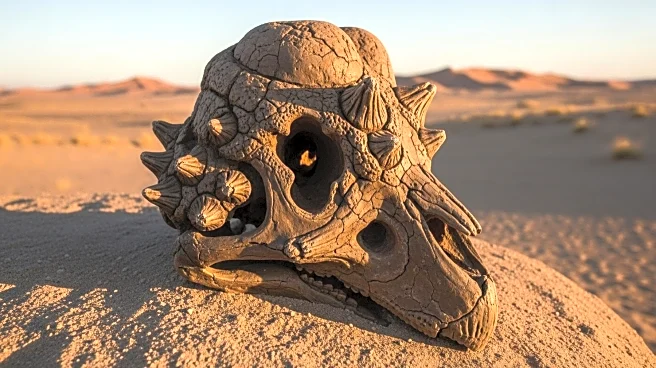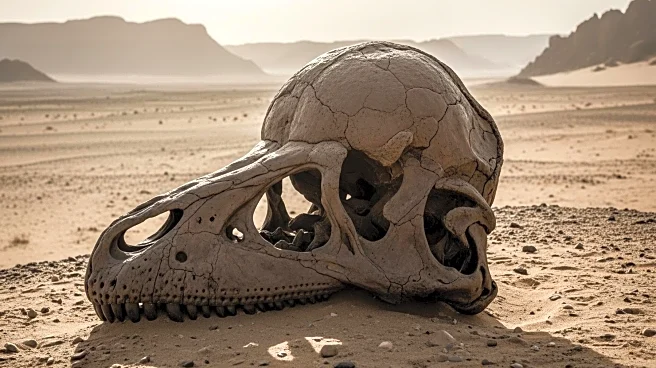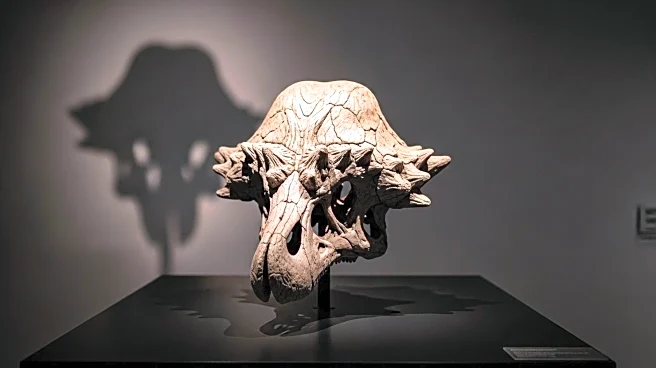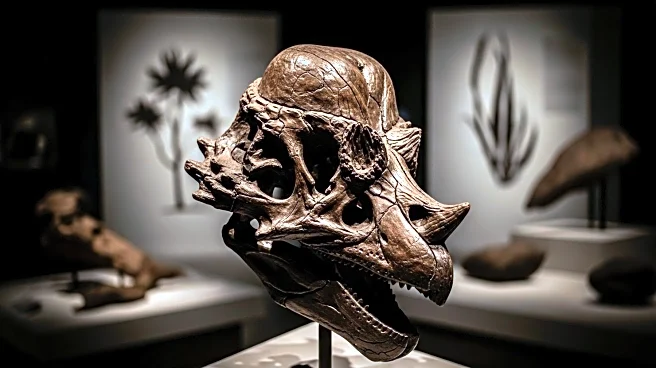What's Happening?
A newly discovered fossil from Mongolia's Gobi Desert has provided significant insights into the pachycephalosaur dinosaur group. The fossil, identified as Zavacephale rinpoche, is the oldest and most complete skeleton of its kind, dating back 108 million years. This discovery, led by Tsogtbaatar Chinzorig from the Mongolian Academy of Sciences, reveals a juvenile specimen with a fully formed dome, offering clues about the development of cranial structures in pachycephalosaurs. The research, published in Nature, suggests that these dinosaurs used their domes for socio-sexual behaviors rather than defense or temperature regulation.
Why It's Important?
The discovery of Zavacephale rinpoche fills significant gaps in the timeline and growth understanding of pachycephalosaurs. It challenges previous theories about the evolution and function of their iconic domed skulls. This fossil provides a rare opportunity to study the anatomy and biology of pachycephalosaurs, including their diet and locomotion. The findings contribute to the broader understanding of dinosaur evolution and the ecological dynamics of the Early Cretaceous period.
What's Next?
Researchers may continue to explore the Gobi Desert for more fossils that could further illuminate the evolutionary history of pachycephalosaurs. The study encourages paleontologists to reassess the growth stages and species classification within this dinosaur group. Future research might focus on the socio-sexual behaviors and ecological roles of pachycephalosaurs in their ancient environments.
Beyond the Headlines
The discovery highlights the importance of international collaboration in paleontology, with contributions from institutions across Mongolia, Japan, and the United States. It underscores the potential for new findings to reshape scientific understanding and the need for continued exploration in fossil-rich regions like the Gobi Desert.











